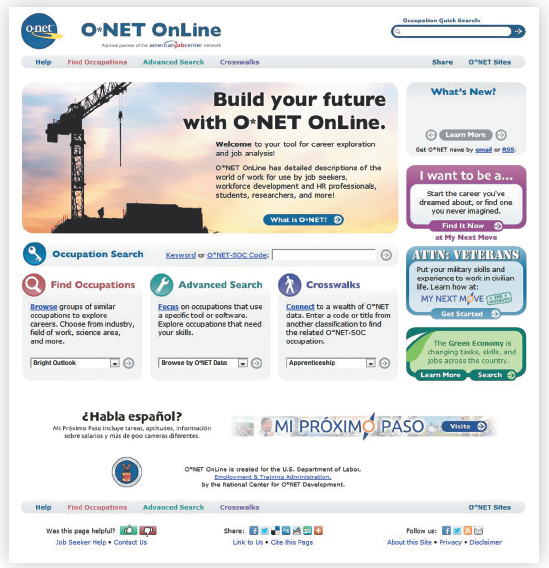Tech Tip: Conducting Industry Research
TECH TIP



CONDUCTING INDUSTRY RESEARCH
In the world of business, anything older than six months is considered ancient. Today, information about industries and the companies that represent them is essential for anyone who wants to get a sense of how careers are trending, what the coolest sectors are, which college majors are in or out, where the money is, and who’s hiring.
THE PROBLEM
You have no idea where to begin your industry research—all the options leave you dizzy.
THE FIX
Start with tried-and-true comprehensive resources: O*NET, the U.S. Bureau of Labor Statistics’ Occupational Outlook Handbook, and a targeted hunt.
HOW TO DO IT

- Visit O*NET OnLine (onetonline.org) and use the Find Occupations option at top of the page to begin your search.
- Search occupations by keyword, or choose from the occupational categories:
a. Career Cluster. These are occupations in the same field of work that require similar skills. You can use Career Clusters to help focus your education plans toward obtaining the necessary knowledge, competencies, and training for success in a particular career path.
b. Industry. These are broad groups of businesses or organizations with similar activities, products, or services.
c. Job Zone. These zones group occupations into one of five categories based on levels of education, experience, and training necessary to perform the occupation.
d. Bright Outlook. These are occupations that are new and emerging, are expected to grow rapidly in the next several years, and are expected to have large numbers of job openings.
e. Green Economy Sector. These are occupations in fields related to environmental protection and sustainable energy.
f. Job Families. These are groups of occupations based on skills, education, training, credentials, and work performed.
g. STEM Disciplines. These are occupations that require education in science, technology, engineering, and mathematics (STEM) disciplines.
- The search results for your particular occupation are listed in a rank order calculated on relevance of the occupational title, alternate titles, description, tasks, and detailed work activities associated with the keyword you entered.
- Select the Relevance Score to view the specific items matched by your search within the occupation.
- Review Occupational Report associated with each desired occupation to find the following information related to each occupation:
Tasks | Tools & Technology | Knowledge | Skills | Abilities | Work Activities | Work Context | Job Zone | Education | Interests | Work Styles | Work Values | Related Occupations | Wages & Employment | Additional Information
- Use this Summary Report to make more informed decisions about your professional, academic, and career-related choices.
| A FEW SITES WE LIKE | |
| Web Site | Internet Address |
| O*NET OnLine | onetonline.org |
| Market Research | marketresearch.com |
| Wall Street Journal | executivelibrary.com/ |
| First Research | firstresearch.com/ |
| Market Watch | marketwatch.com/ |
| Hoovers | hoovers.com |
| Occupational Outlook Handbook | bls.gov/ |
| Indeed.com | indeed.com |
| Job.com | job.com |
| Job Bank USA | jobbankusa.com |
| JobWeb | jobweb.com |
| Simply Hired | simplyhired.com |
| USA Jobs | usajobs.gov |
| Volunteer Match | volunteermatch.org |
SOMETHING YOU SHOULD EXPLORE:
What kinds of jobs jump out at you? Although you’re still in college, it’s wise to read up on job descriptions and look into internships in fields that interest you. An internship gives you something impressive to put on your résumé and is also one of the fastest ways to find out if you don’t like a job.
ONE STEP FURTHER
Create an Online Profile on LinkedIn.com. Remember: Your online profile should be professional and include your résumé and only the information you’d like potential employers to know.
Source: O*NET OnLine (www.onetonline.org), and the Bureau of Labor Statistics, Occupational Outlook Handbook (www.bls.gov/